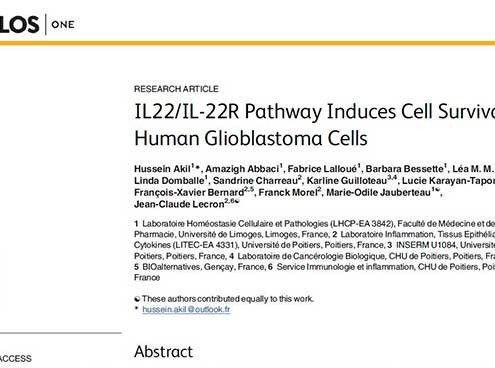
IL22/IL-22R pathway induces cell survival in human glioblastoma cells
Cancer, Inflammation, Inflammation, PharmacologyInterleukin-22 (IL-22) is a member of the IL-10 cytokine family that binds to a heterodimeric receptor consisting of IL-22 receptor 1 (IL-22R1) and IL-10R2. IL-22R expression was initially characterized on epithelial cells, and plays an essential role in a number of inflammatory diseases.
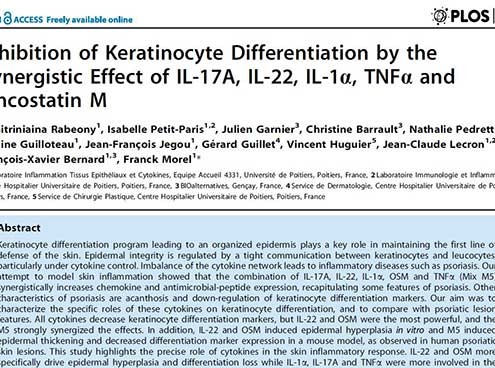
Inhibition of keratinocyte differentiation by the synergistic effect of IL-17A, IL-22, IL-1α, TNFα and oncostatin M
Inflammation, Inflammation, Psoriasis, PsoriasisThis study highlights the precise role of cytokines in the skin inflammatory response (psoriasis). IL-22 and OSM more specifically drive epidermal hyperplasia and differentiation loss while IL-1α, IL-17A and TNFα were more involved in the activation of innate immunity.
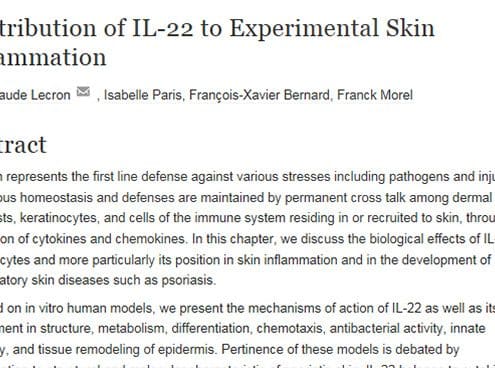
Contribution of IL22 to experimental skin inflammation
Inflammation, Inflammation, Psoriasis, PsoriasisFocused on in vitro human models, we present the mechanisms of action of IL22 as well as its involvement in structure, metabolism, differentiation, chemotaxis, antibacterial activity, innate immunity, and tissue remodeling of epidermis.
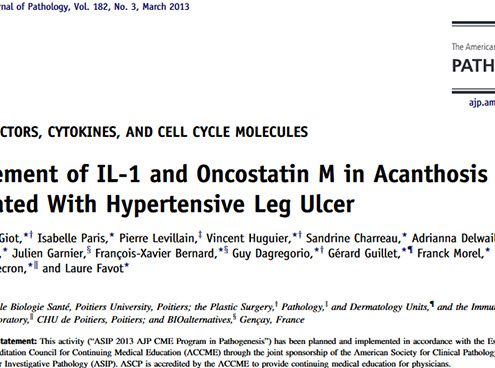
Involvement of IL-1 and Oncostatin M in acanthosis associated with hypertensive leg ulcer
Inflammation, Inflammation, Pharmacologie, PharmacologyHypertensive leg ulcer (HLU) is an inflammatory disease characterized by intense pain, alteration of vascularization, and skin necrosis. The optimal treatment relies on surgical removal of necrotic tissues covered by a split-skin graft.
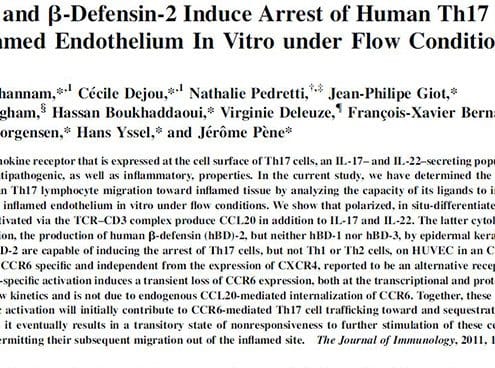
CCL20 and β-defensin-2 induce arrest of human Th17 cells on inflamed endothelium in vitro under flow conditions
Inflammation, Inflammation, Pharmacologie, PharmacologyThese results indicate that Ag-specific activation will initially contribute to CCR6-mediated Th17 cell trafficking toward and sequestration in inflamed tissue, but that it eventually results in a transitory state of nonresponsiveness to further stimulation of these cells with CCR6 ligands, thus permitting their subsequent migration out of the inflamed site.
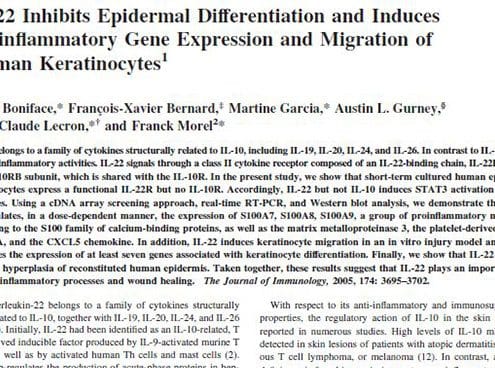
IL-22 inhibits epidermal differentiation and induces proinflammatory gene expression and migration of human keratinocytes
Inflammation, Inflammation, Psoriasis, PsoriasisIL-22 belongs to a family of cytokines structurally related to IL-10, including IL-19, IL-20, IL-24, and IL-26. In contrast to IL-10, IL-22 has proinflammatory activities. IL-22 signals through a class II cytokine receptor composed of an IL-22-binding chain, IL-22RA1, and the IL-10RB subunit, which is shared with the IL-10R.


